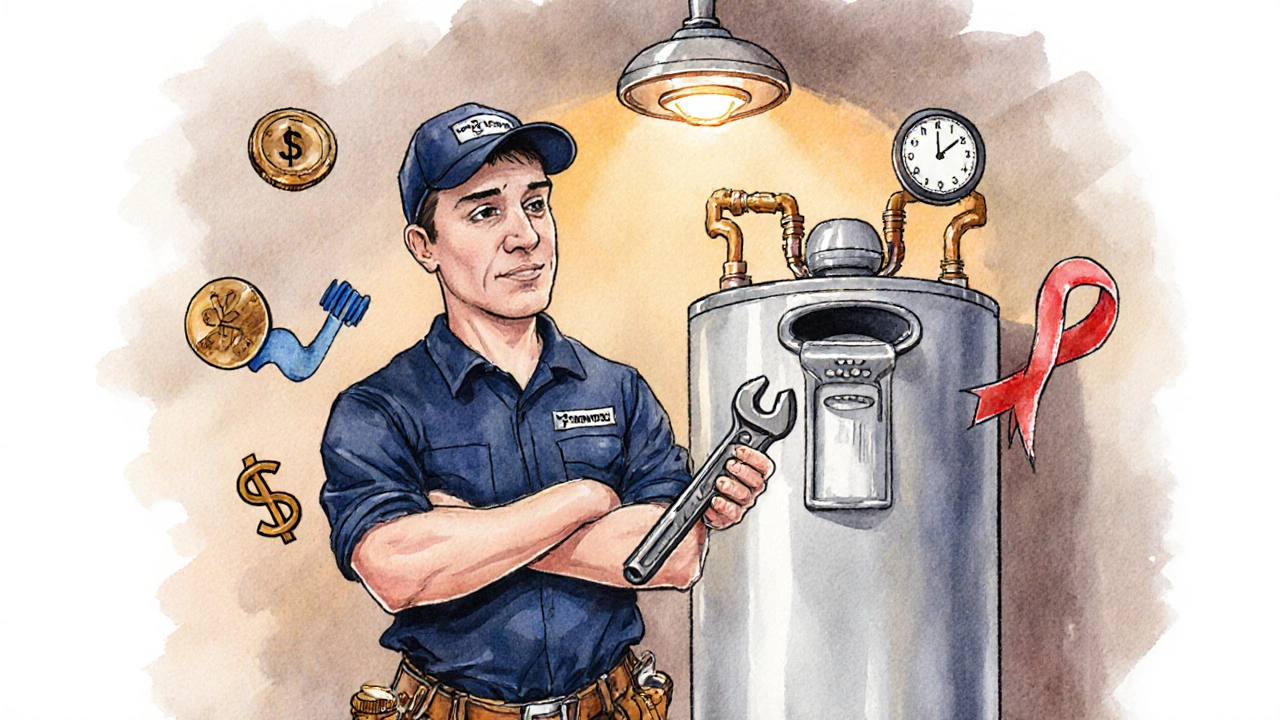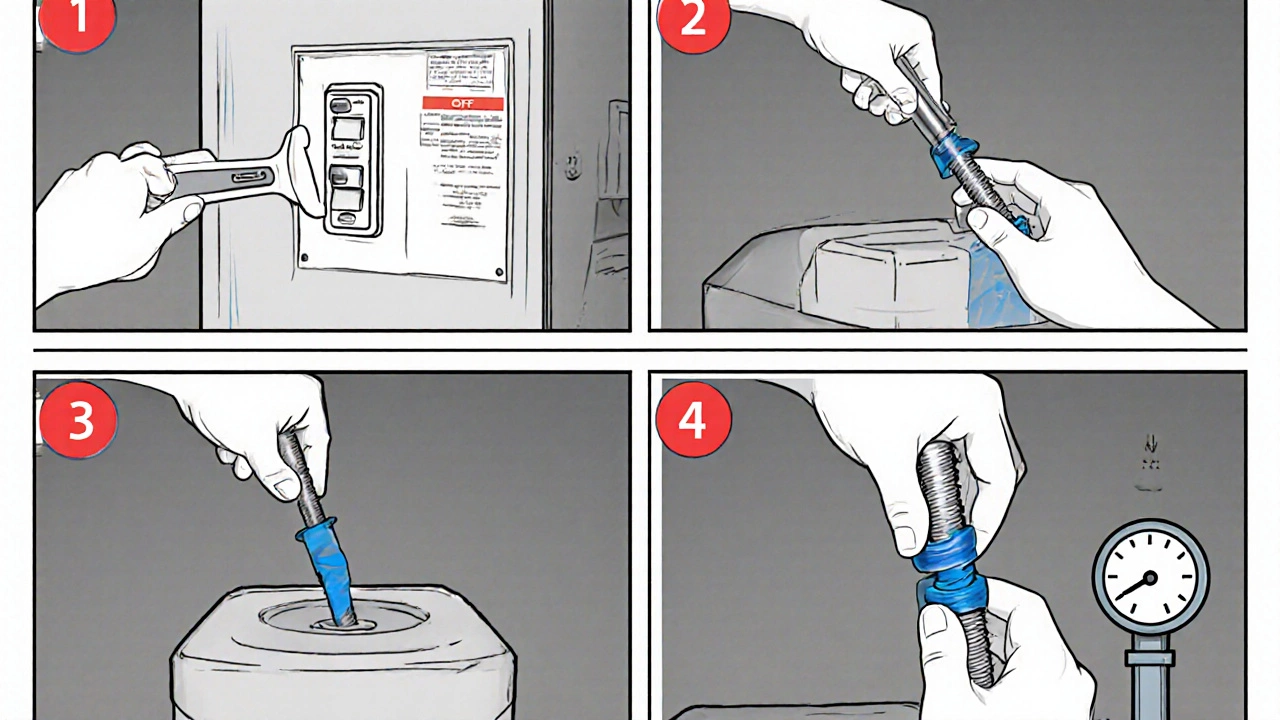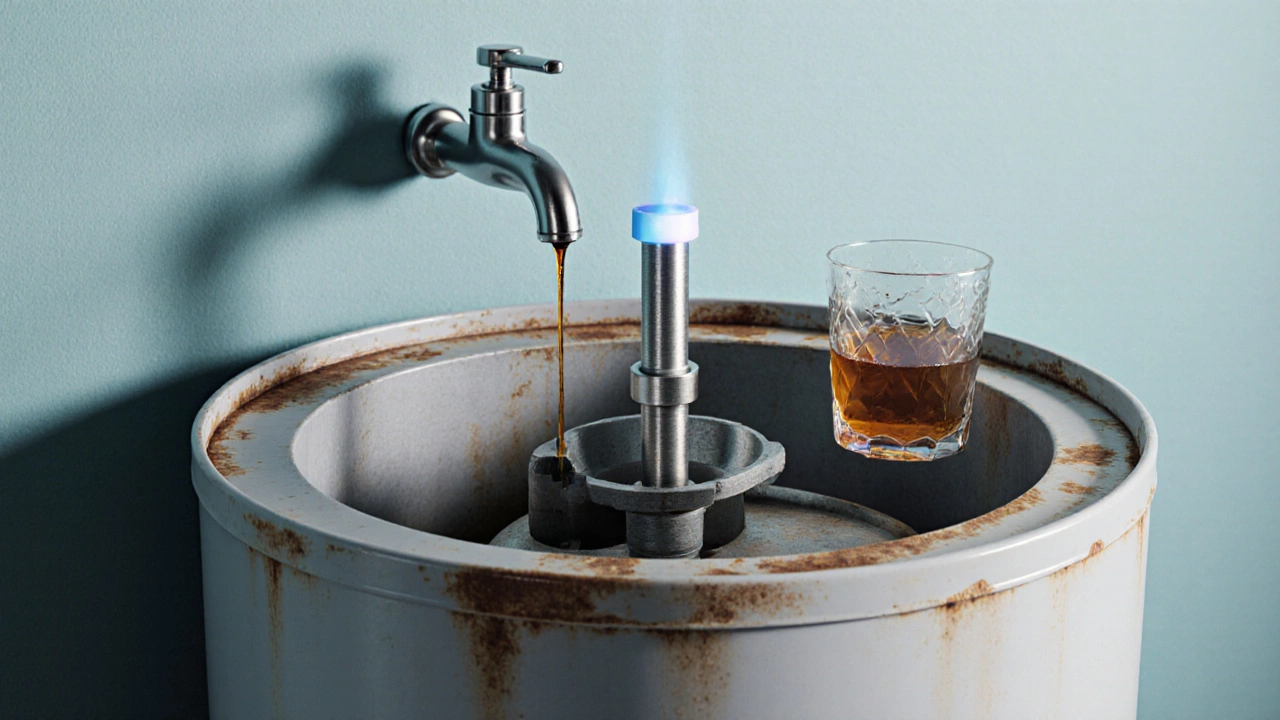Water Heater Anode Rod Replacement Cost Calculator
Estimated Replacement Cost
Click "Calculate Replacement Cost" to see estimate
Parts Cost
- Magnesium Anode Rod NZ$30-45
- Aluminum Anode Rod NZ$25-40
- Zinc-Aluminum Hybrid NZ$35-55
Labor Cost
- Professional Labor (Hourly) NZ$80-120
- Travel/Diagnostic Fee NZ$15-30
Noticing rusty water or a sudden drop in hot‑water output? Chances are the anode rod replacement cost is on your mind. The anode rod is the tiny hero that protects your water heater from turning into a rusted bucket. When it gives up, you either replace it yourself or call someone who does.
What is an anode rod and why it matters
Anode rod is a sacrificial metal rod installed inside a water heater to prevent tank corrosion. It works by attracting corrosive elements, so the tank metal stays intact. Most modern heaters come with a magnesium or aluminum version, and each material behaves a bit differently in hard‑water environments.
Water heater refers to the whole appliance that stores and heats water for households. Its steel tank can last 10‑15 years, but the anode rod often needs attention far sooner.
Typical lifespan and signs you need a new rod
Even though manufacturers claim a 5‑10 year life span for the rod, real‑world factors shrink that window. Here are three tell‑tale signs:
- Rusty or discolored water coming from taps.
- Visible corrosion around the top of the tank.
- Noise that sounds like a “metal scraping” during heating cycles.
If you spot any of these, pull the heater’s power or gas supply, let it cool, and check the rod. A quick visual inspection often reveals a corroded tip or a completely eaten‑away core.

How much does a replacement really cost?
Cost breaks down into three buckets: the part, labor, and any extra fees.
| Item | Typical Price (NZ$) | Notes |
|---|---|---|
| Magnesium anode rod (standard 2‑inch) | 30‑45 | Best for soft water, most common. |
| Aluminum anode rod | 25‑40 | Works well in moderately hard water. |
| Zinc‑aluminum hybrid | 35‑55 | Extra protection in heavily chlorinated systems. |
| Professional labor (hourly) | 80‑120 | Depends on region; Wellington rates sit near the high end. |
| Travel/diagnostic fee | 15‑30 | Often waived if you authorize the repair. |
Putting it together, a straightforward swap in the Wellington area usually lands between NZ$115 and NZ$175 if you hire a licensed plumber. DIY enthusiasts can shave off the labor portion and end up spending around NZ$35‑50 for the part alone.
DIY vs hiring a pro: pros and cons
Both paths have merit. Consider these trade‑offs before you decide.
| Factor | DIY | Professional |
|---|---|---|
| Cost | Save NZ$80‑120 on labor. | Higher total bill, but includes guarantee. |
| Time | 15‑30 minutes if you have tools. | Usually a 1‑hour visit. |
| Risk | Potential for leaks if you overtighten. | Licensed plumber follows insurance‑backed standards. |
| Warranty impact | May void manufacturer warranty if done incorrectly. | Warranty stays intact. |
If you’re comfortable handling basic plumbing tools and you’ve read the safety steps, DIY can be a quick win. Otherwise, a qualified professional plumber saves you from costly mistakes.
Step‑by‑step guide to replace the rod yourself
- Turn off power (electric) or shut the gas valve (gas). Let the tank cool for at least an hour.
- Locate the anode access panel on the top of the heater. It’s usually a 2‑inch hex‑head screw.
- Using a 1½‑inch pipe wrench, loosen the old rod counter‑clockwise. Expect some resistance if corrosion is heavy.
- Inspect the old rod. If it’s <20% of its original length, it’s time for a new one.
- Wrap Teflon tape around the threads of the new rod. This prevents leaks.
- Insert the new rod and tighten clockwise until snug-don’t over‑torque, as the rod could strip the threads.
- Replace the access panel, restore power/gas, and run a short hot‑water cycle to purge any air.
Tools you’ll need: pipe wrench, Teflon (plumber’s) tape, a flashlight, and the correct replacement rod. If you don’t have a wrench, a sturdy adjustable spanner works too.

Choosing the right material: magnesium vs aluminum vs zinc
Each metal behaves differently under water chemistry. Pick the one that matches your local water profile.
| Material | Best For | Typical Lifespan | Cost Range (NZ$) |
|---|---|---|---|
| Magnesium | Soft to moderately hard water | 3‑5 years | 30‑45 |
| Aluminum | Hard water with high mineral content | 5‑7 years | 25‑40 |
| Zinc‑aluminum hybrid | Heavily chlorinated municipal supplies | 4‑6 years | 35‑55 |
If you’re unsure about water hardness, call Wellington Water for a quick test. Many homeowners simply start with a magnesium rod and switch later if corrosion persists.
Tips to avoid common pitfalls
- Never replace a rod while the heater is still hot; the metal expands and you could burn yourself.
- Check the torque on the new rod-too loose leads to leaks, too tight can strip the threads.
- Keep a spare rod on hand; it’s cheap insurance against future emergencies.
- If you notice a sudden drop in hot‑water volume after replacement, air may be trapped. Run a few minutes of hot water to clear it.
- Document the date of replacement. A simple note on the heater’s label helps you schedule the next check.
Frequently Asked Questions
How often should I check my anode rod?
Inspect it every 12‑18 months, especially if you have hard water or notice any rust in the tank.
Can I use a countertop replacement kit instead of buying a new rod?
Kits that simply extend the existing rod can work, but they don’t replace the corroded core. For reliable protection, swap the whole rod.
Is an aluminum rod safe for electric water heaters?
Yes. Aluminum is widely used in both electric and gas units. Just ensure the heater’s manufacturer approves it.
What should I do if the new rod starts leaking?
Turn the water supply back on, tighten the rod a little more, and re‑apply Teflon tape. If the leak persists, the threads may be damaged and you’ll need a professional to replace the flange.
Does a faulty anode rod affect water temperature?
Indirectly, yes. Corrosion can create holes in the tank, reducing the water volume and making the heater work harder, which may lead to uneven temperatures.

